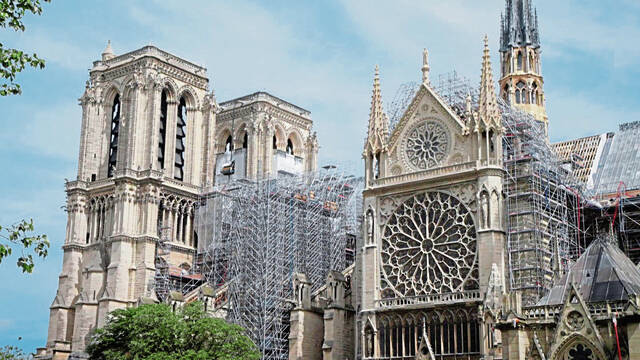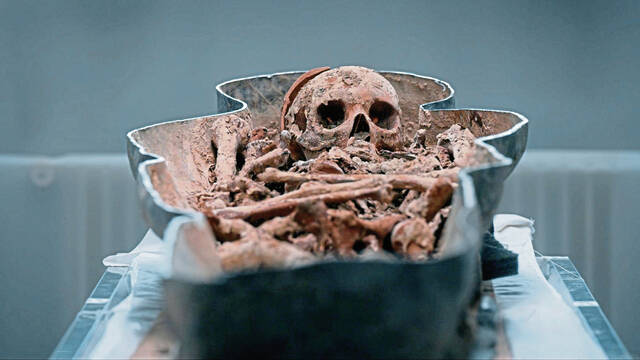TV Talk: PBS’s ‘NOVA’ recounts Notre Dame discoveries
Trib Total Media TV writer Rob Owen offers a viewing tip for the coming week.
It’s easy to take TV for granted. Its ubiquity, especially now with dozens of channels and streaming platforms, makes the medium so omnipresent and at times overwhelming with the number of choices that it’s easy to forget that some TV remains rare and elusive.
I thought about this while watching the new PBS “NOVA” documentary “Lost Tombs of Notre Dame” (9 p.m. Wednesday, WQED-TV), not because this is the best documentary film ever made but because it’s the kind of deep dive on a subject that’s not sexy enough for streaming (there’s no murder to be solved), nor commercial enough for cable.
Watching the film made me thankful for PBS because I can’t think of another American TV outlet that would tell this story in this format.
Science series “NOVA” is a mainstay of the PBS schedule, but “Lost Tombs” offers multiple entry points: the newsiness of the Notre Dame fire and its reopening, the religious appeal given it’s about a sacred place, the historical aspect because parts of the story go back as far as the 16th century and the science of the painstaking research work that remains ongoing.
After the April 2019 fire threatened to destroy France’s most famous cathedral, restoration efforts revealed archeological discoveries that are the focus of this “NOVA” episode. Mysterious, partially caved-in caskets and pieces of painted stone sculpture were found in the pit of the church’s transept.
“It’s like finding the Mona Lisa in several pieces,” notes one of the film’s interview subjects.
Can scientists definitively identify the occupants of the caskets? Where did the sculpture pieces come from and why were they buried under the cathedral’s floor? “NOVA” provides a more complete, satisfactory answer to the latter than the former, piecing together the notion of a church’s “choir screen” (aka “rood screen”), its historical significance and why it was removed with the pieces discarded as rubble.
“Lost Tombs of Notre Dame” is largely old-school educational TV, and there’s nothing wrong with that. At a compact one hour, this “NOVA” episode educates in an entertaining enough manner. Most importantly, it tells a story you might read in a niche publication like Smithsonian Magazine or hear about on NPR. But it’s hard to imagine any TV outlet other than PBS devoting an hour to a story that has broad appeal whether the viewer comes at it from a religious, archeological or historical perspective.
The next time politicians talk of defunding PBS, recognize that shows like “Lost Tombs of Notre Dame” are what will be on the chopping block. Surely there remains room in our American discourse to support the excellent work of public television that provides programs all Americans can access, sharing these kinds of stories that few if any TV outlets would attempt to tell in documentary form.
You can reach TV writer Rob Owen at rowen@triblive.com or 412-380-8559. Follow @RobOwenTV on Threads, X, Bluesky and Facebook. Ask TV questions by email or phone. Please include your first name and location.
Remove the ads from your TribLIVE reading experience but still support the journalists who create the content with TribLIVE Ad-Free.


